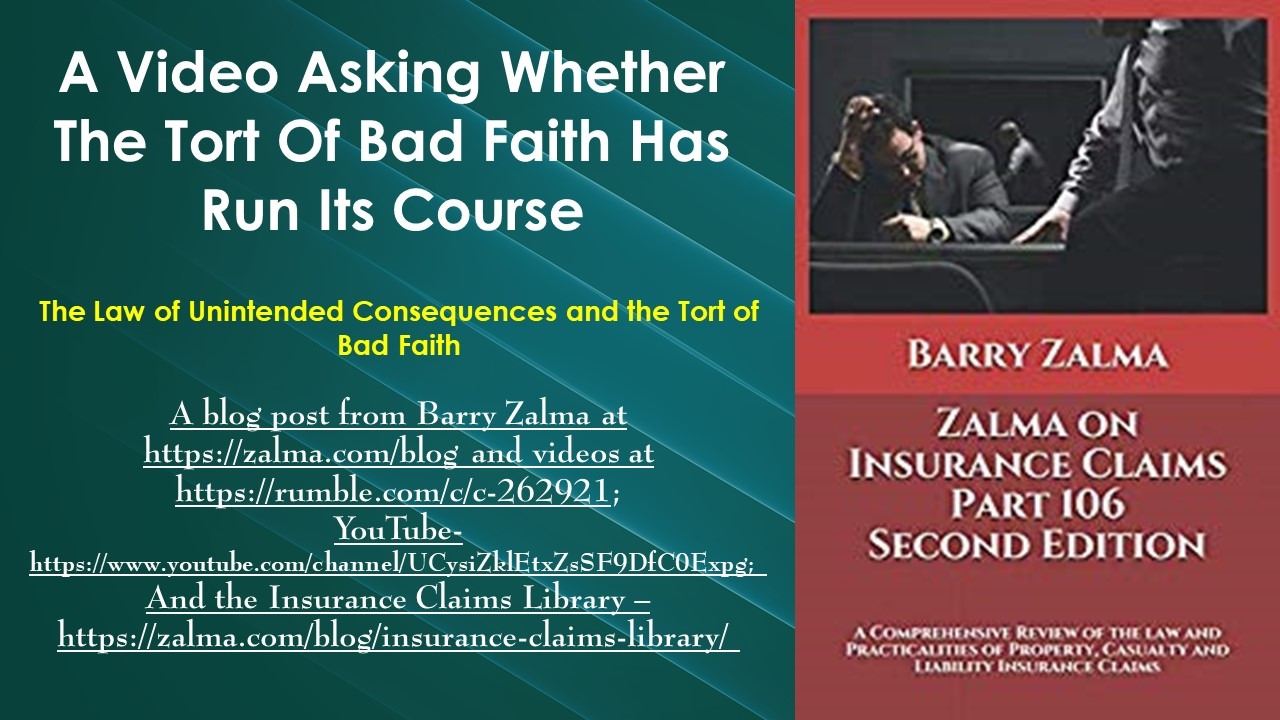-
News Feed
- EXPLORE
-
Pages
-
Groups
-
Events
-
Blogs
-
Marketplace
-
Offers
-
Jobs
-
Developers
Bad Faith Tort's Unintended Consequences

The Law of Unintended Consequences and the Tort of Bad Faith
Read the full article at https://www.linkedin.com/pulse/video-asking-whether-tort-bad-faith-has-run-its-zalma-esq-cfe/?published=t and see the full video at https://rumble.com/vfhi55-a-video-asking-whether-the-tort-of-bad-faith-has-run-its-course.html and at https://youtu.be/iRMAZrOvGKw and at https://zalma.com/blog plus more than 3650 posts.
US law was first organized using English common law. When a contract was breached, only contract damages could be recovered. Tort damages were limited to tortious conduct and the two categories of damages were mutually exclusive.
The primary purpose of damages for breach of a contract is to protect the promisee’s expectation interest in the promisor’s performance. Damages should put the plaintiff in as good a position as if the defendant had fully performed as required by the contract. Insurance, like all parts of modern society, is subject to the deprivations of the law of unintended consequences. The law can be defined as the understanding that actions of people—and especially of government or the courts—always have effects that are unanticipated or unintended. Insurance is controlled by the courts, through appellate decisions, and by governmental agencies.
We are 100% funded for October.
Thanks to everyone who helped out. 🥰
Xephula monthly operating expenses for 2024 - Server: $143/month - Backup Software: $6/month - Object Storage: $6/month - SMTP Service: $10/month - Stripe Processing Fees: ~$10/month - Total: $175/month
- Art
- Causes
- Crafts
- Crime
- Dance
- Drinks
- Film
- Finance
- Fitness
- Food
- Games
- Gardening
- Health
- Home
- Literature
- Music
- Networking
- Paranormal
- Other
- Politics
- History
- News
- Party
- Science
- Religion
- Shopping
- Sports
- SyFy
- Politically Incorrect
- Philosophy
- Theater
- Technology
- Wellness



